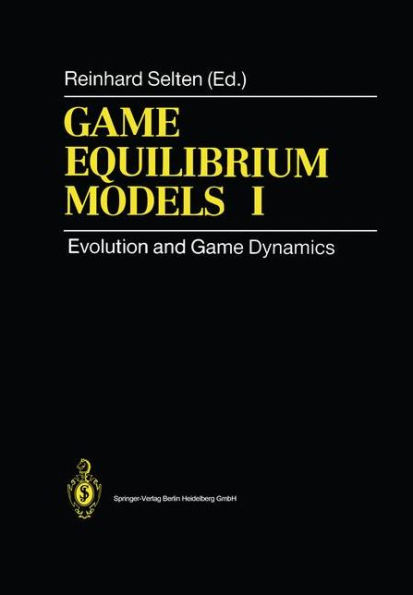5
1
9783540542254



Game Equilibrium Models I: Evolution and Game Dynamics / Edition 1 available in Hardcover, Paperback

Game Equilibrium Models I: Evolution and Game Dynamics / Edition 1
- ISBN-10:
- 3540542256
- ISBN-13:
- 9783540542254
- Pub. Date:
- 09/24/1991
- Publisher:
- Springer Berlin Heidelberg
- ISBN-10:
- 3540542256
- ISBN-13:
- 9783540542254
- Pub. Date:
- 09/24/1991
- Publisher:
- Springer Berlin Heidelberg

Game Equilibrium Models I: Evolution and Game Dynamics / Edition 1
$54.99
Current price is , Original price is $54.99. You
54.99
In Stock

Product Details
| ISBN-13: | 9783540542254 |
|---|---|
| Publisher: | Springer Berlin Heidelberg |
| Publication date: | 09/24/1991 |
| Edition description: | 1991 |
| Pages: | 330 |
| Product dimensions: | 6.69(w) x 9.61(h) x 0.36(d) |
From the B&N Reads Blog
